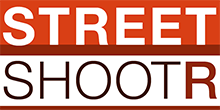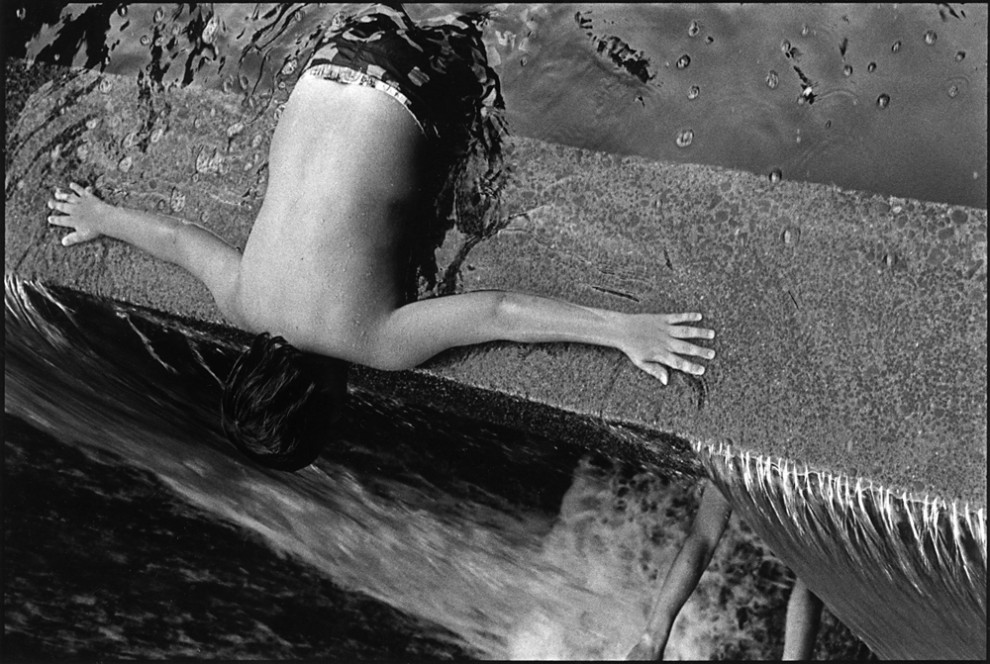In Public’s Blake Andrews is an outspoken street photographer and blogger based in Eugene Oregon. He shoots mostly black and white film and while his work fits within a broad definition of street photography, he sees himself as a photographer first. Looking for images wherever they can be found. I sat down with Blake to talk about the process of finding images and making photographs. Hit the jump to read the interview!
Black Andrews Interview – Shoot First, Ask Questions Later

I met Blake Andrews earlier this year when he was doing a workshop with Matt Stuart in Los Angeles. The first thing I noticed was that his eyes never really stopped moving. He seemed to be constantly looking for images 3 or 4 steps ahead of wherever he was standing. He was pretty busy with the workshop so we agreed to together by Skype when we were both back home. Our conversation touched on street photography but we spent more time talking about his process of finding images and the importance of making photographs.
I hope you enjoy the interview as much I did!
StreetShootr: Hi Blake, thanks for taking the time to talk with us today!
Blake Andrews: My pleasure, Karl. I’m glad to be here.
SS: Let’s jump right into it. I understand that you don’t really think of yourself as street photographer in the strictest sense?
BA: I guess that’s what I best fit into in terms of my work being candid and found moments and just being open to possibilities. But it’s never been a clean fit for me to look at myself as a street photographer or even compare work to traditional street photography. I just do what I do. I found my thing and whatever. If some people think my work is street photography or not isn’t important to me. It doesn’t have to be one thing or the other.
SS: You could argue that your images follow in the tradition of some of the great street photographers like Winogrand and Friedlander. But you don’t seem too trapped under their influence. You definitely have your own unique voice.
BA: I’m all over the place. I’ll just shoot whatever opportunity presents. The material’s a little different than Winogrand or Friedlander because they were basically shooting, well not Friedlander so much but Winogrand was a people person. He shot cities and sidewalks and busy scenes and stuff. I don’t really encounter that so much but if I was around a city all the time I’d probably shoot those kinds of photos more.
I think Winogrand was sort a compulsive camera carrier. He just took his camera and shot what was around him and it was almost as much about the process and just the act of shooting and translating the world into photos. The result was amazing too and he made some amazing photos but I think for him it was a lifestyle and visual consumption through photography and his whole output was sort of based on that. So I can relate to that definitely.
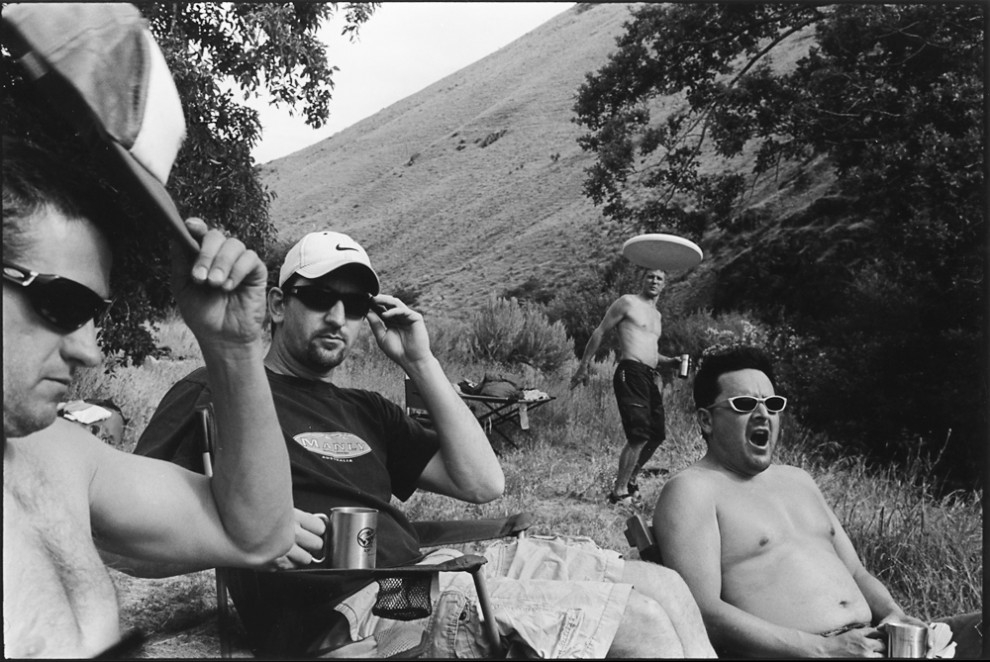
SS: Would you say you’re driven more by the act of taking pictures than by the final product?
BA: That’s a good question and I’m not really sure how to answer that. Winogrand was consumed by the act of photographing. He didn’t even deal with the final product at some point in his life. I’m not to that point. I obviously care what’s in the photo but it has become like a leash for me. I always have my camera and it’s always part of my engagement with the world. If I never put film in the camera, never looked at the photos that would be boring.
So the final product and the process both matter to me. Because I enjoy the process and I also need to have that finished thing too. Photography isn’t like ditch digging, where the only outcome of the process is to have finished it. When you’re taking photographs the bingo moment is when you get the shot. It’s the proof, the seal that you have sort of accomplished something. So it’s not purely about the process it’s also about the result.
SS: Do you think the results are a kind of validation of the process?
BA: Mostly, ya. The only thing that most people are going to see are your results. You could be the most passionate photographer in the world going out for 7 hours a day but if you don’t have any good photos it’s not going to amount to much. You know those moments where you see a picture that stands out above the others those are the ones that keep you going.
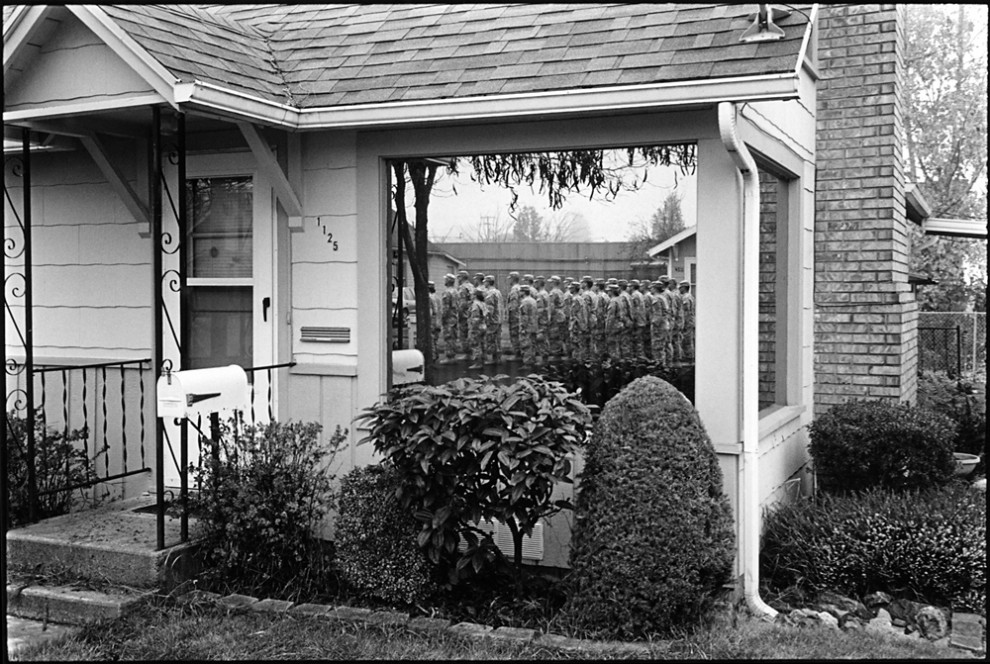
SS: You’re in Eugene, Oregon. How does living in a smaller town affect your photography?
BA: Eugene is a college town. It’s not the type of city where you can have a lot of anonymity with busy sidewalks with lots of people. I take my camera everywhere. I sort of engage with life here and I always have my cameras. But it’s not necessarily dedicated street outings where I’m going out saying, “I’m going to cover this block for two hours and see if I can take a bunch of street photos.” It’s more like I see what I can find here and there.
I’ve hit most of the West Coast cities and a little bit of Europe and since I live in Eugene that’s what I do to get a big dose of classic street. To get satisfied with that dense activity where you’re just shooting all day and end up with a bunch of rolls at the end of the day. I can’t really get to that point around here too easily. Like I said, it’s a small city and there’s not a whole lot of surprises left and it doesn’t lend itself to that type of photography so much. To get a real satisfying solid dose of photography I really have to go somewhere else.
SS: Does your travel schedule satisfy your shooting desire? Or are you finding that you’re always wanting to shoot more?
BA: Oh, I always want to shoot more. I do what I can. I need to be here most of the time. I spend a few weeks in Maine every summer and that’s where I do a lot of stuff. And I travel here and there and hit places when I can. At this point in the year I always get a little nervous because I feel the days getting shorter and there’s this need to go shoot a bunch of pictures before I know it’s going to be dark and rainy soon.
I think Eric Kim made the comment about being bored with Berkley. Or I hear that from people who live in NY or London or wherever and I just think “Wow, I’d love to spend a week in a place like that!” But I think it’s a little bit of the grass is always greener. Wherever you are it doesn’t feel as exotic as someplace else.
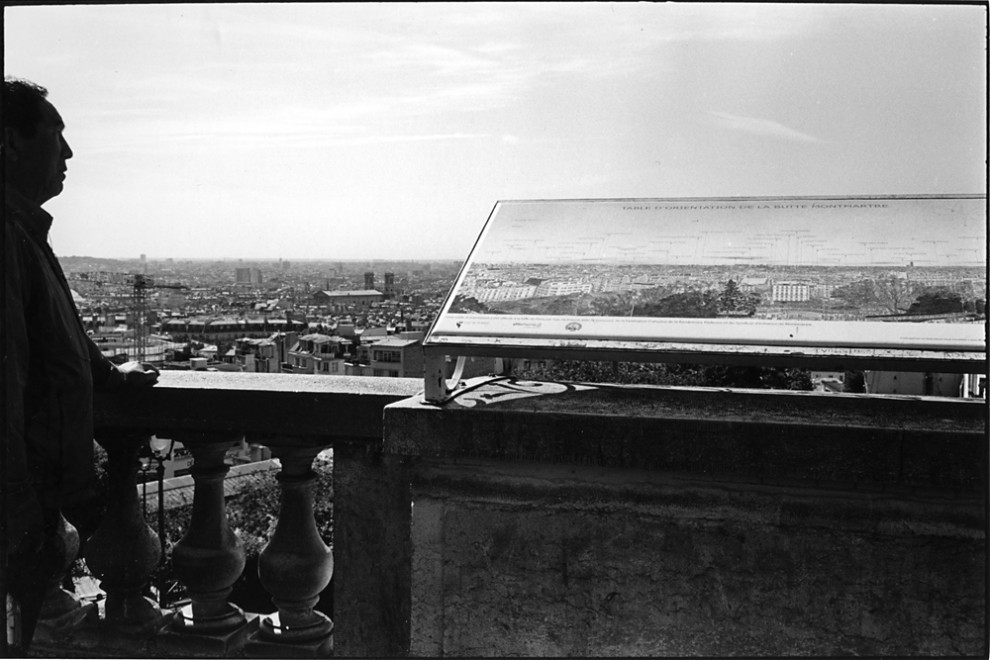
SS: It’s always easier for me to shoot in a new place. If I go to LA I’ll shoot 500 shots a day. I’ll shooting for 12 hours at a time. I’m thrilled, I come home then wake up the next day and do the same thing. Something about being in a new place really sparks my creativity.
BA: Part of the excitement of this kind of photography is just being in new places and opening yourself to new possibilities and it’s sort of hard to do that when you’re in the place you live and you think you know what’s going to happen in different situations. You just have to be determined and keep looking at the world that’s in front of you.
You have to be open to possibility on the street. You’re out there and you don’t necessarily know what you’re looking for until you find it and then you latch onto it. But can’t do that unless you’re open to the possibilities. It’s a contradictory thing. You have to be looking but sort of not looking at the same time.
SS: That’s the tricky thing about street photography. Nothing you can do can force something interesting to happen in front of you. All you can do is be ready for it when and if it does happen…
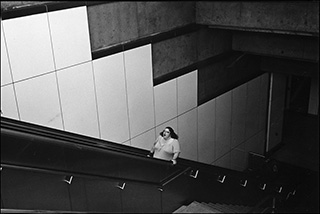
BA: For me, it’s a function of how much work I put into it. Like if I spend all day walking around and looking for photos I’m going to see stuff. It’s inevitable. So it’s just a matter of putting yourself out there. And maybe you go for 2 or 3 hours and there’s nothing but you can pretty much count on seeing things over a longer period. If you’re in the right environment and you’re looking and you put in the time it’s going to happen I think. You just don’t know when or where.
I think a lot of this kind of photography is that you have to have faith that the opportunities are out there. Sort of like fishing. You go out to the river one day and you throw your line and maybe you’re not going to catch anything. But if you do it every day for 3 years the fish are going to add up. If you add that up over 40 years then you look back and you’ve got 1000 good pictures.
SS: How long have you been shooting film?
BA: Ya, I started out shooting film in the early 90’s before digital. A lot of guys who started out back then eventually decided to jump ship and went into digital but I never really felt the need to do that. I love film, it’s always felt good to me and I like dealing with it and the whole process of it. And looking through it, the contact sheets and all that. There was never any point where I was like alright I need to give that up to go to this other method. The other method has a lot of convenience and it’s probably cheaper but it never felt quite right to me. Film just works for me.
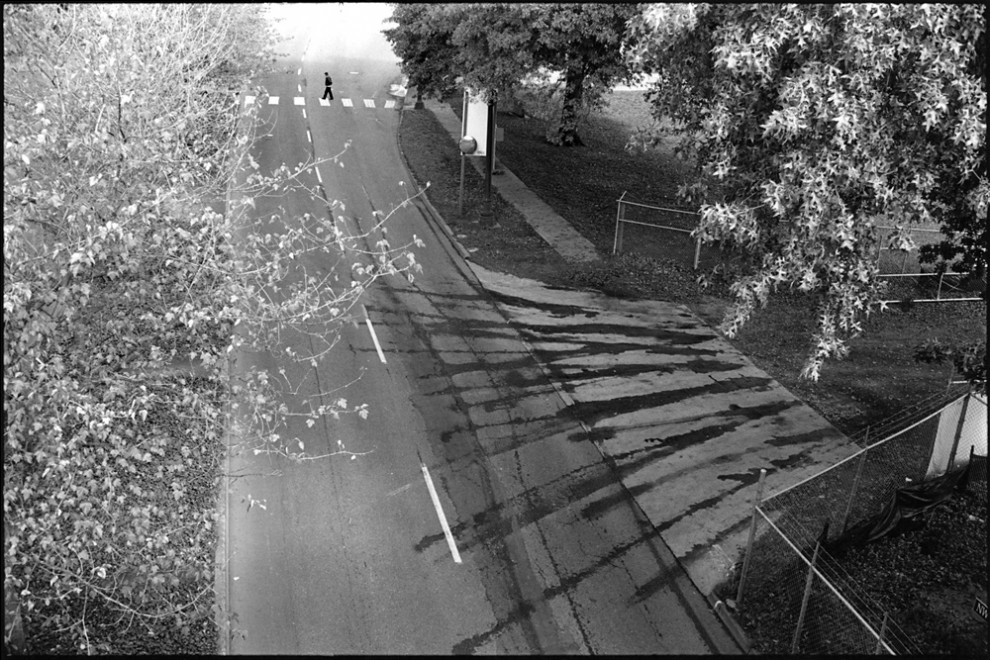
SS: Have you ever been tempted? Has there ever been a digital camera that’s come along that almost got you?
BA: I’ve actually tried a few digital cameras over the years and they just haven’t felt right. Film has always just felt right. If I encounter a scene and I shoot it with a digital camera I’d always be thinking, “I wish I had shot that on film.” It’s always been the default for me. I think digital is probably the way to go for color but digital black and white doesn’t feel good to me.
SS: But back in the day people shot film because it was the default way to make a photograph. In that respect, digital is the new film for a lot of people.
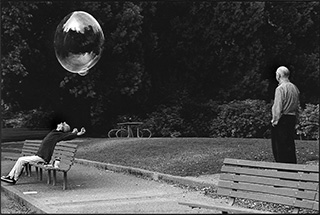
BA: There’s something about the physical nature of film, and the craft, and it just feels a little more real to me. The process is something I’ve dealt with since I started photography and I’ve never felt the need to drop it. It’s like making a pot by hand. It’s not about the utility of making a pot at that point because you can go to Ikea and buy a brand new pot that looks as good as anything you can make on a pottery wheel. But the process of sitting on the wheel and spinning your thing has an appeal thats independent of the thing you’re making for creating.
That’s what the whole film world is for me. It’s not just about the look or the result but it’s about the whole process.
SS: What is your film of choice these days?
BA: It doesn’t matter. I think right now I’m shooting Kentmere.
SS: So whatever happens along you’re happy with it?
BA: I’m a cheapskate so I shoot whatever I can find on B&H for cheap. Right now it’s Kentmere, I think it’s 3 or 4 bucks a roll. For a long time I shot Arista because that was even cheaper. Arista was basically black market Tri-X. And that was like 3 bucks a roll.
SS: I’ve heard of people hoarding huge boxes of Arista in their closets. As soon as word got out that it was being discontinued everyone started stocking up.
BA: Ya, Troy Holden bought like 10,000 rolls of it. Not sure if he’s still going through that. I’m not too attached to any specific film. I can pretty much make any film look the way I want in the printing process. Even if it looks a little bit off I’m not too worried about that. I care more about the image itself instead of worrying about how the grain looks or whatever.
It basically comes down to what’s in the frame. I mean that’s the whole challenge of it is to go out and put something in your frame that’s interesting. Then nobody cares if it’s Tri-X or TMax or whatever.
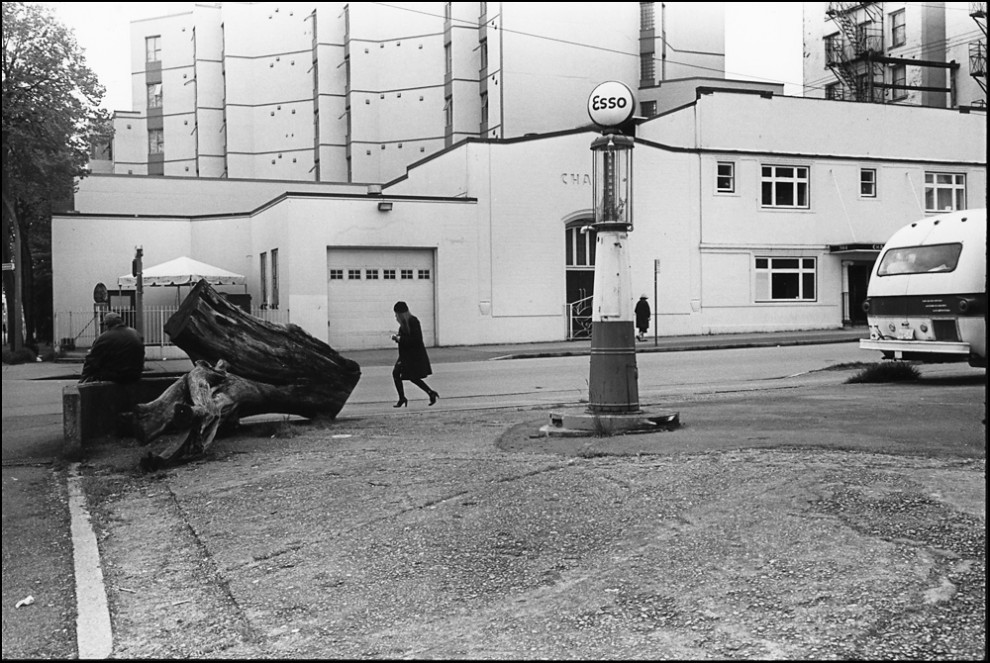
SS: Every film shooter seems to recognize they’re shooting on borrowed time and eventually film is going to be harder and harder to get. How much would a roll of film have to cost before you felt you had to switch to digital?
BA: We’re maybe approaching that now! [Laughs]
At this point it’s still pretty reasonable but the prices are always going up. I’m hopefully going to live another 35 or 40 years. I think I can survive until the end of my life before the price increase means I have to stop shooting film. And I’m also shooting less film than I used to too. I’m scaling back a little bit which makes it a little bit easier to afford.

SS: You develop and print all your own images. I got the goldfish image you sent me and I wanted to say the print quality was amazing. Really beautiful work!
BA: So here’s the questiom. Do you think that’s a street photo?
SS: I do actually. But I have a problem with eye contact in street photography! So I’m conflicted by the fact that the fish is staring right at me. [Laughs]
BA: I shot 3 or 4 pictures of that fish. And that was the only one where the fish was actually looking back at me. And obviously you can’t really plan that and it’s just sort of an accident but if you look around and you play with situations sometimes they’ll turn into something.
SS: In another interview you defined street photography as “making unplanned photos in an unpredictable environment.” In that context there’s no question this photo is street.
BA: Well there you go, if that’s a street photo then I guess what I do is street photography! But that’s the extreme example of stretching the definition. I look for little scenes or something that I didn’t plan on or stage. And you just see it and there it is and you capture it.
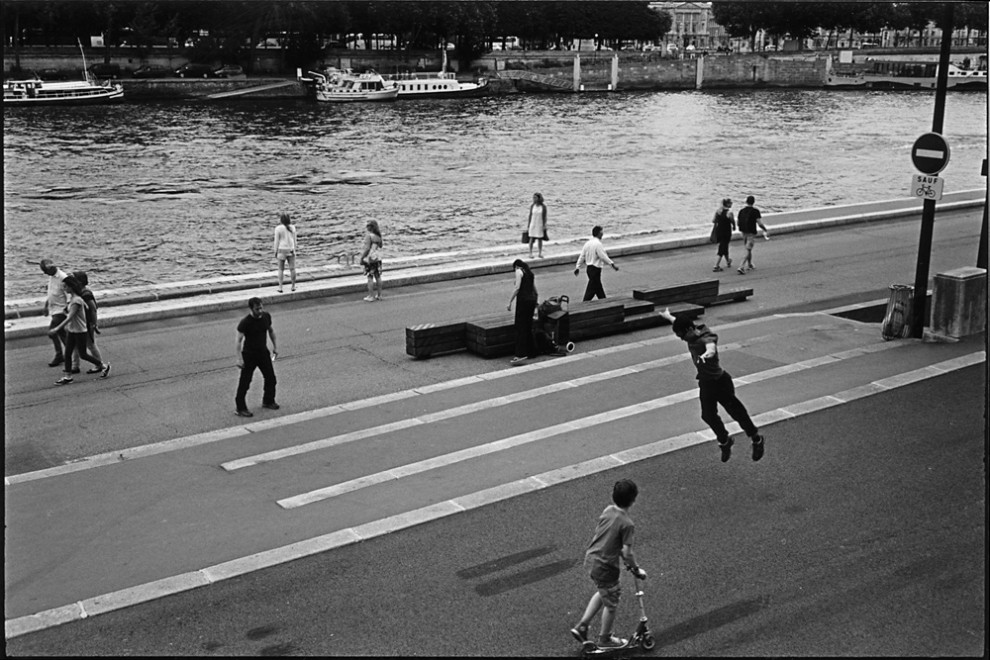
SS: We’ve talked about Friedlander, Winogrand. I think it’s easy to be influenced by the grandfathers of street photography but are there any modern street photographers that you’re particularly fond of? Who stands out for you?
BA: Oh, there are so many photographers that I like but most of them them are not street photographers. Sage Sohier, Paul D’Amato, Wolfgang Zurborn, Ed Panar, Mark Steinmetz, Vanessa Winship, Michael Northrup, Phil Bergerson, Stephen Gill, Gerry Johansson, Masao Yamamoto, Joachim Brohm, Thomas Roma all come to mind.
For street photography the book that really stood out for me recently was The City by Andrew Savulich. I’m not even sure if that’s street photography, it’s more like photojournalism. He was a stringer for a newspaper in the 1980s and it’s all the outtakes and non-newspaper photos from that time.
The images remind me of Weegee to a certain extent. They’re flash lit and a lot of them are at night and they’re shots of accidents and weird urban situations. It’s like he was sitting listening to the police scanner for things to happen and then he’d go out and shoot these events but not in the way a normal documentarian would shoot it for a newspaper. They’re more like the weird factor and there’s a subversive strange visual element. I think they’re good.
SS: Do you mostly discover new photographers through books?
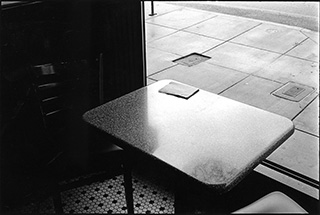
BA: I see a lot of stuff on the internet. I think that’s the way most of us probably see a lot of photos. But they don’t really sink in as much. I think they just roll right by me. But if I look at a book of those same photos then it hits me and it has time to sort of sink in, It might take me a half hour to look at the book. Then I can see if they images are really strong.
I think the process of consuming a book means it penetrates a little differently. I guess it goes back to the film era. When I first got into photography there was no internet and I had to look at books to see who was out there and what they had done. And I sort of kept up that habit. That’s still the way I absorb most of the new photography that sticks with me.
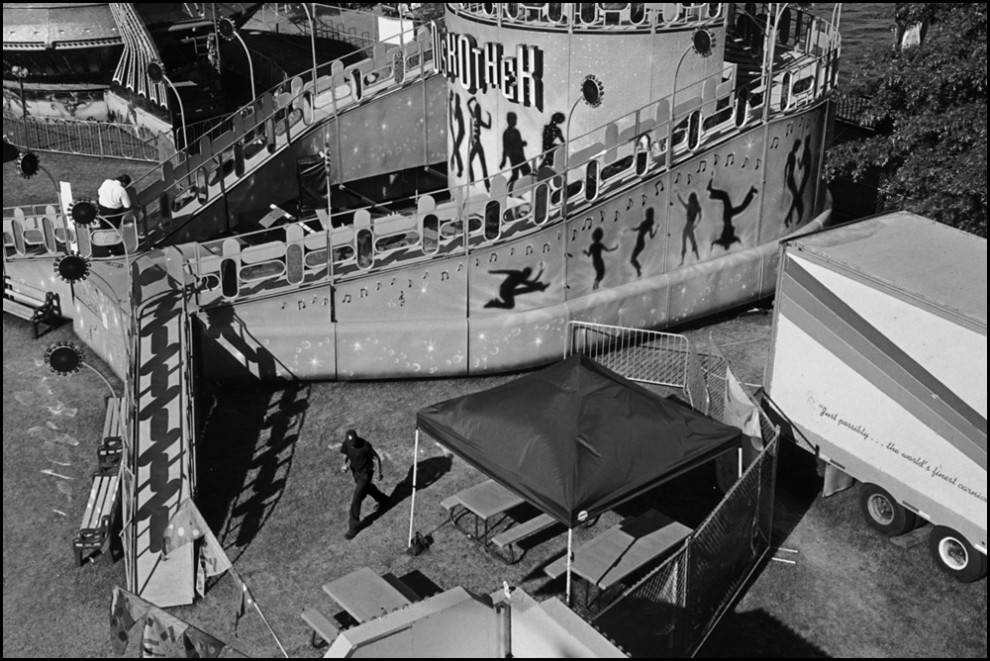
SS: Just one more question. If you had one piece of advice for street photographers what would that be?
BA: The pressure! Something profound! What can I say? [Laughs]
I used to have this phrase on my website, shoot first ask questions later. It’s taken from pop culture but it applies to street photography especially because shooting is the root of it.
You know someone might go out thinking they’re going to shoot all the doorways in a certain neighborhood or they’re only going to shoot this breed of dog for a month. That’s where the shooting comes after the idea. But with Shoot First Ask Questions later the shooting is at the root of the whole thing. You have to go out there and make pictures first. Later you ask questiosn. That’s when you decide later what you shot, what it’s about, how it can relate to the world, what it means.
The whole thing is rooted in the picture and everything else is after that. I guess that’s my advice.
SS: Blake, thanks so much for talking to me today. This has been amazing!
BA: Ya, it’s been fun!
You can find out more about Blake Andrews online at:
Blake Andrews on iN-Public.
Blake Andrews Tumblr.
B Blog by Blake Andrews.
What’s your take on StreetShootr’s Blake Andrews interview? Great insight into the process of a an excellent street photographer? Do you agree with his points of view? Post your ideas in the comments below and keep the conversation going!
